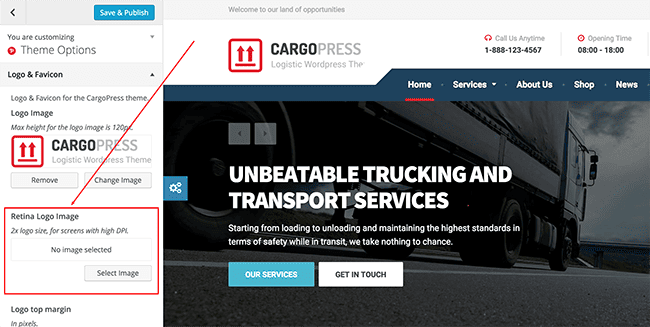
- Website menu logo normal retina resolution pro#
- Website menu logo normal retina resolution software#
- Website menu logo normal retina resolution mac#
After all it has been six years since the introduction of the first retina display laptops - and almost all web-capable mobile phones right now have retina displays.

If your website does not have these high-resolution images ready, users with retina displays would notice those blurry images and see your site as looking outdated. Without subpixel rendering, low-resolution images would appear to have even less resolution on retina displays. Furthermore images upscaled this way could not take advantage of subpixel rendering, which can give the illusion that the display has more pixels that it really has. Thus the user’s eye would contrast the rounded edges of the graphic with the text around it and quickly see its jagged edges denoting lower resolution. On a typical web page, non-retina images are upscaled prior to placement on a display and placed side-by-side with text that are already retina-quality. Yes, a major downside of retina displays is that low-resolution line-art graphics tend to look blurry when shown on a retina display. Sample Line-Art Image (retina display resolution). Sample Line-Art Image (standard resolution). However if you are viewing these from a regular low-PPI display, both images will look identical. If you are viewing from a retina display, the upper image will look blurry when compared to the one below it. Have a look at the sample two images below at 100% zoom levels.

But if the photo has a resolution lower than the display, it’s going to look worse. As for photos - as long as there’s enough pixels in the image, it looks great. Vector images looks as sharp as its text counterparts. Text looks sharp, with no apparent fuzziness around rounded corners. Generally retina displays make text looks like they were printed on laser printers and images looks like glossy photos. But if you can’t find a good store nearby to compare them side-by-side, Art Authority has a comparison of retina displays vs regular one done via macro photography.
Website menu logo normal retina resolution software#
Since Apple still sells a non-retina MacBook Air but most of its laptop line up are retina displays, you can compare them side by side on the same store, same lighting conditions, and exactly the same software - maybe you can also play with them a bit to display the same exact content. One way to do this is just visit a nearby Apple Store. Really, no words can adequately depict how good retina displays are compared to non-retina ones. But priced at $8400 in 2003, there were few buyers of these displays. That worked out to 204 PPI, much higher than most other monitors of the time which typically has resolutions around 100 pixels per inch.

These displays have a resolution of 3840×2400 pixels over 22.2 inch diagonal.

However the truly first retina displays were the IBM T220/T221 line of computer monitors, sold between 20. Laptops are intended to be viewed at a longer distance than mobile phones, hence it can get away with a lower PPI figure yet still qualifies as “retina”.
Website menu logo normal retina resolution pro#
On laptops, the debut was circa 2012 with the introduction of the 15 inch Retina Display MacBook Pro with a resolution of 216 PPI. Retina displays made its consumer debut in 2010 with the introduction of the iPhone 4 with a resolution of 326 PPI. But these informal definitions I’ve provided should be enough to cover the common cases. There are formal definitions of this based on scientific research. Typically this would be at least 300 Pixels Per Inch (PPI) on one foot viewing distance or 200 PPI at a distance of two feet (60 centimeters). In informal terms, a retina display are high-resolution screens such that normal human eye cannot identify individual pixels on it when viewed from a distance. If that’s not true - meaning that your website is not retina-display ready - or worse that you’re still not sure what a retina display is - then read on.
Website menu logo normal retina resolution mac#
Do you have a business website? Does your company’s sales depend on it? Are your visitors on mobile or mac users? If any of those rings true then you probably have updated the website’s images ready for retina displays, haven’t you?


 0 kommentar(er)
0 kommentar(er)
